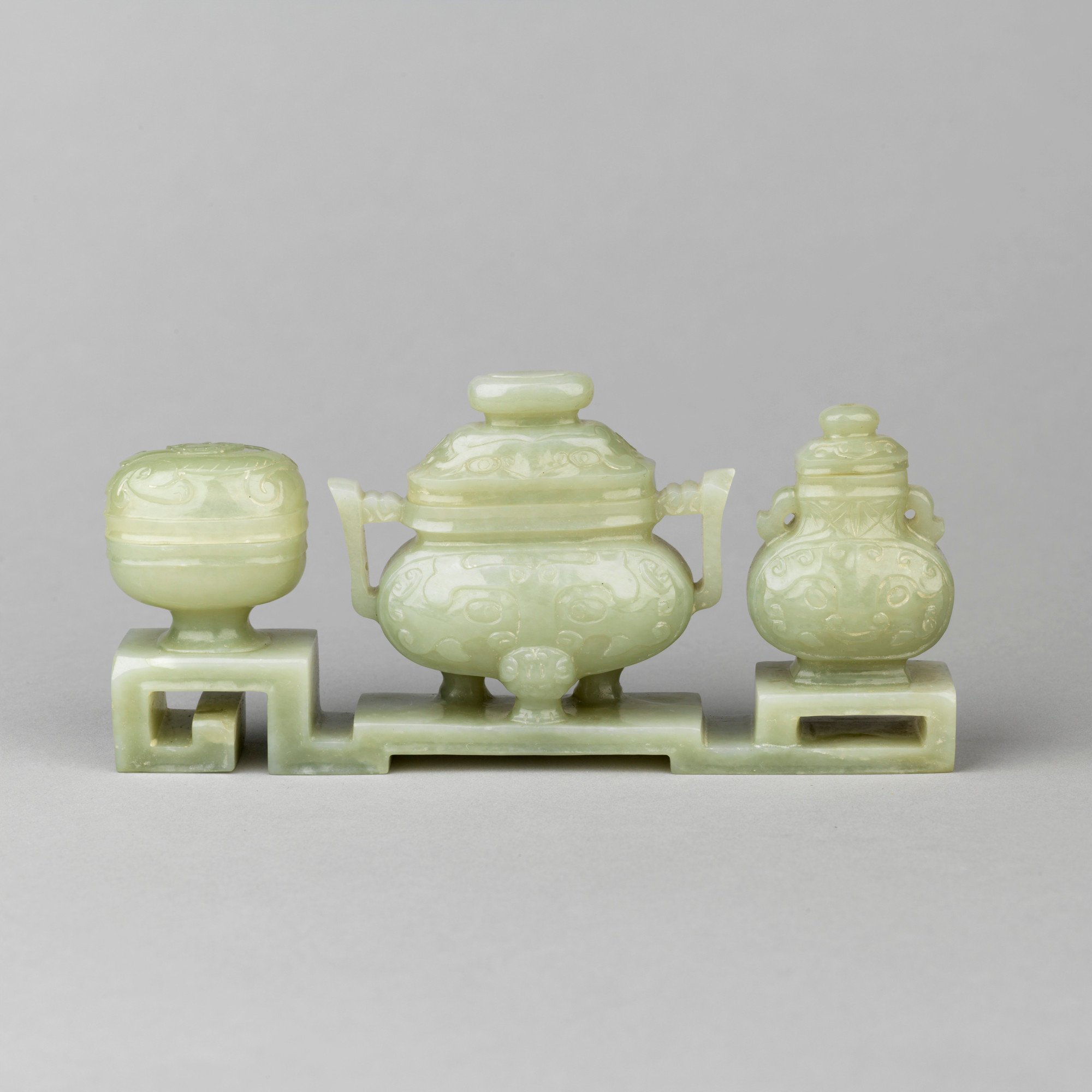
Vibrant jades collected from around the world
Fabergé
The House of Fabergé was the greatest Russian jewellery firm of the late nineteenth and early twentieth centuries. It was founded in 1842 in St Petersburg by Gustav Fabergé, master goldsmith. In 1870 it was taken over by his son Peter Carl, who rapidly expanded the business and took it in a new direction.
In addition to continuing to make traditional jewellery designs using precious stones and metals, Peter Carl began to use natural minerals and less expensive stones from Russia such as nephrite, obsidian, rock crystal and aventurine quartz. Fabergé favoured nephrite, the dark-green jade from Siberian sources over the lighter jade, jadeite.




